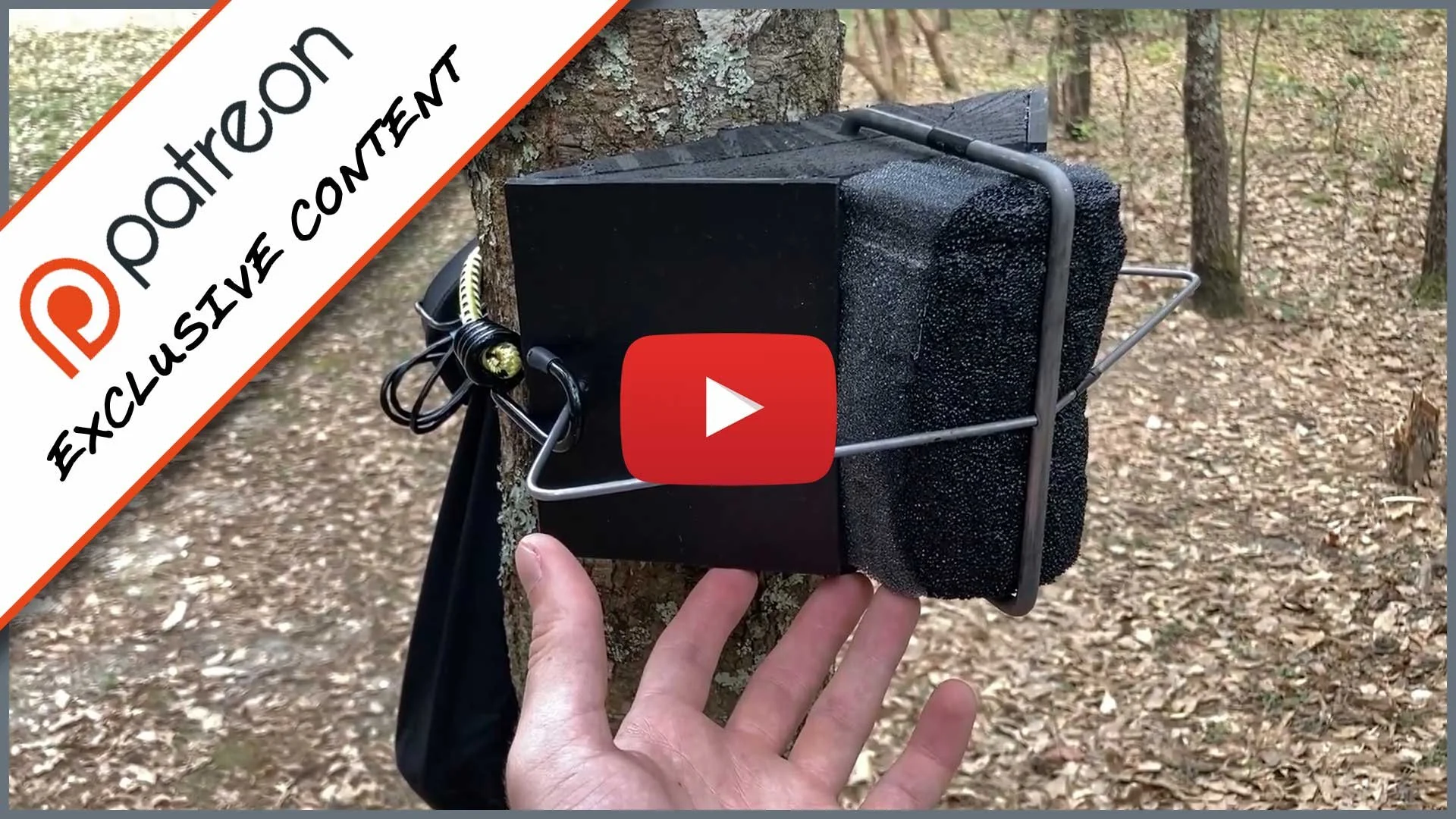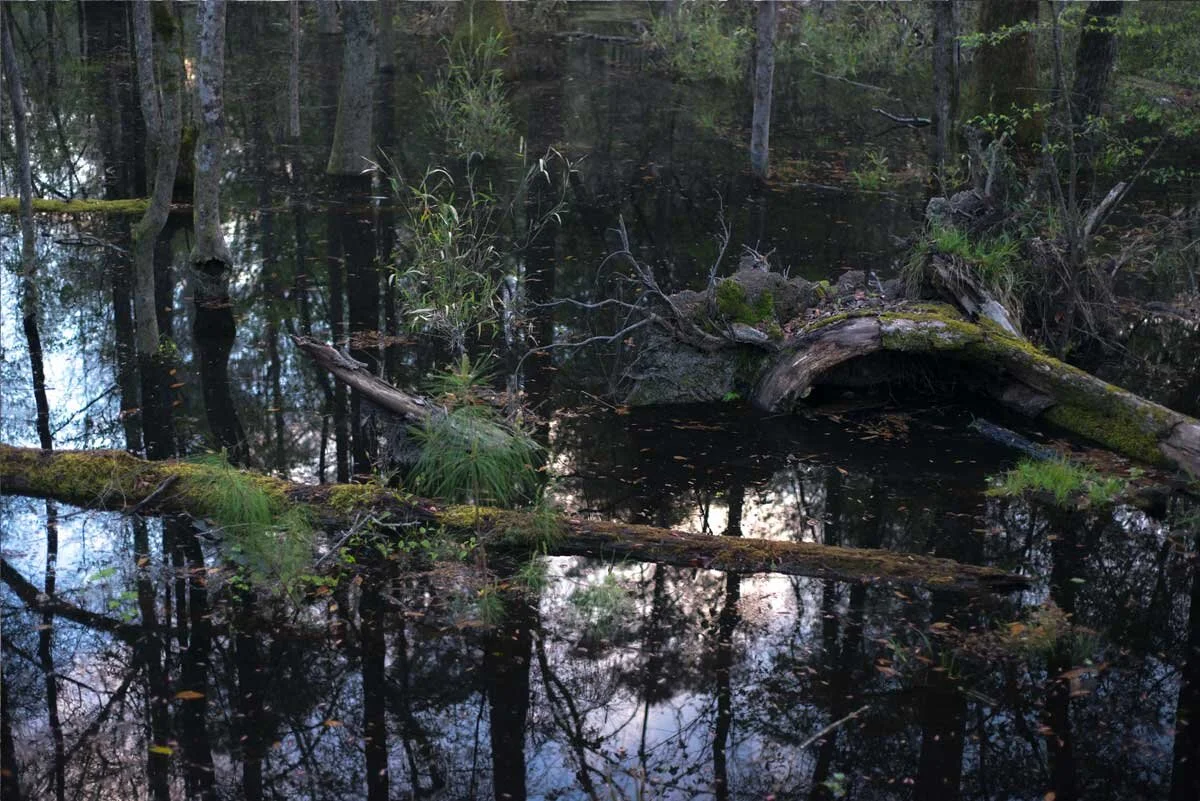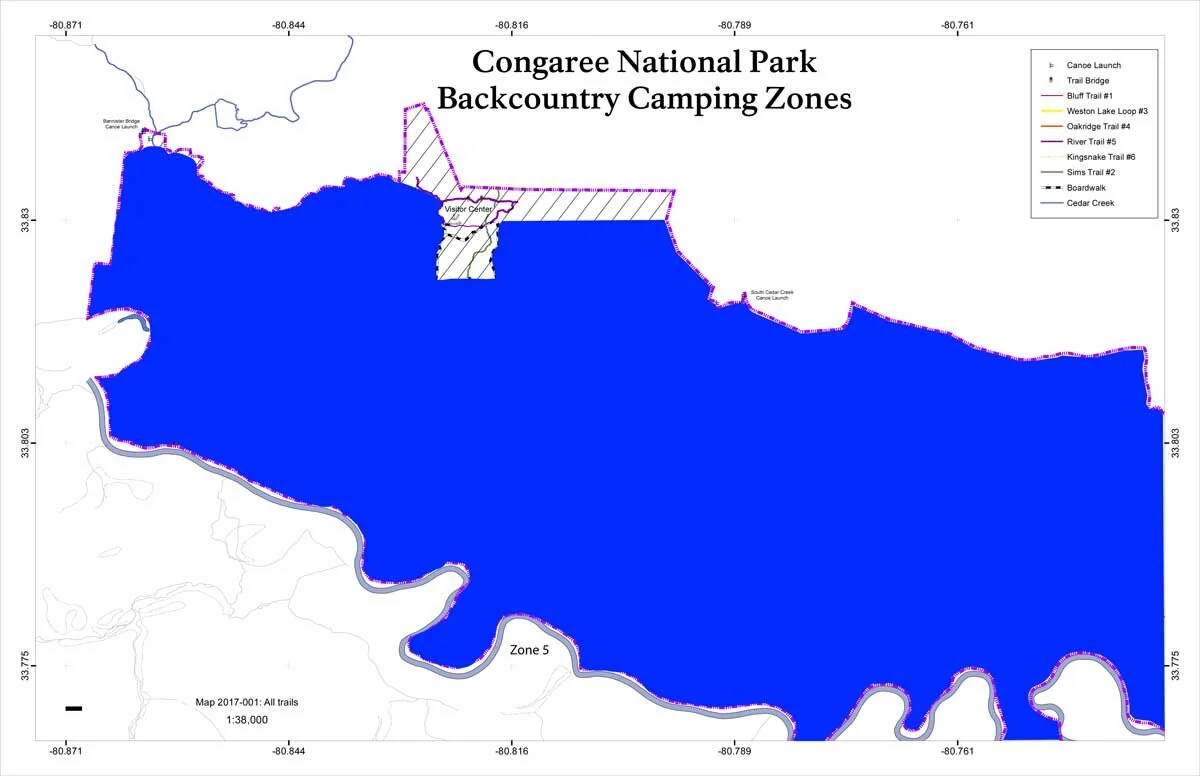Congaree National Park: Cackling Owls & Falling Trees
If a tree falls in a forest and no one is around to hear it, does it make a sound? It does when there’s a microphone there :-)
After recording upland chorus frogs in Virginia, the next stop on my field recording road trip was the Congaree National Park in South Carolina. After researching the park trails, maps, and wildlife guides, I decided that I would spend a total of four nights in the wilderness region.
After my camping permit was approved, I headed for the Congaree on March 28th with great excitement.
Join me on this field recording trip where I record the sounds of the nation’s largest old growth bottomland forest.
While you read, please enjoy the sounds of the Congaree.
Behind The Sounds Video
The Behind The Sounds (BTS) video for this trip is available to my supporters on Patreon.
The BTS series is a resource for learning field recording techniques, advice, methodology, and gear selection and set up.
Each episode covers one recording expedition.
It takes a tremendous amount of time and effort to film these informative videos in the field and edit them in post production.
To watch this Behind The Sounds episode and the full series to date, consider becoming a Patreon. If you do, you’ll also receive my Field Recording For Beginners eBook and the opportunity to Zoom with me to ask questions, nerd out on gear, or receive critiques on your work.
Congaree National Park
The main reason I wanted to visit the Congaree was to experience the old growth bottomland forest. Old forests of this type are extremely rare and the Congaree features the largest old growth bottomland hardwood forest in the entire United States.
Much of this old growth is in the wilderness regions of the park, although the Boardwalk and Oakridge trails do take you through some old growth sections.
Old growth forests are the pinnacle in biodiversity. After being untouched for so long, many niches are created that are filled by unique species often endemic to the region.
The Congaree also has the highest concentration of champion trees in all of North America! A champion tree is the largest known tree of its species. Currently, there are 23 different species whose champion tree is in the Congaree.
I could not wait to get some recordings of these majestic forests.
Arrival
Congaree current conditions at the Visitor Center.
Shortly after arriving, I realized that my camping plan was not possible. Recent rains had put nearly the entire park under one foot of water. The only available trails were 75% of the Boardwalk and 50% of the Sims trail.
I tried walking through the flooded section, but as the water became increasingly deep, I started to doubt the engineering of the boardwalk. It probably was not designed to support the weight of over a foot of water and a human, so I turned back.
Since the entire wilderness region was inaccessible, I called the park for advice. I learned that my only option was to book a campsite at either the Longleaf of Bluff Campgrounds, both in the front-country of the park and near the main road.
I chose the Bluff campground because it was a hike-in only site, about one mile from the visitor center. I hoped that this requirement would deter other campers and would grant me some quiet.
Unfortunately, only one night was available for the next two weeks. Fortunately, it was for the same day of my arrival but meant that my trip to the Congaree would be cut three days short.
Making The Most Of It
While laying in my hammock thinking about new plans for my trip, I realized that there were some positives to this situation.
With most of the park underwater, I had much less land to learn and could focus my efforts on a few locations. By spending more time planning fewer recordings, I could do better location scouting which should yield better recordings.
It was going to rain in the evening which should drive most of the public from the park and grant me some quality alone time with the land.
It was a beautiful, sunny day and I was spending it outside in nature, not sitting at a computer in an office.
With the forest floor having been replaced with water, the soundscapes would have a natural reverb effect. Honestly, I didn't realize this until editing my recordings in post, but it was a huge benefit and greatly added to my recordings!
Recording
My campsite at the Bluff Campground.
During the day, wind speeds averaged 20-25mph and there were lots of people in the park. Far from ideal recording conditions and with limited trails available to explore, the forest felt extra packed. To escape, I headed to my campsite and setup my first recording.
One mile removed from the heart of the park, the Bluff Campground offered some shelter from the throngs of people. Here, I decided to record some of the powerful winds blowing through the long leaf pines.
After observing the soundscape for a few minutes, I determined where I wanted to put the microphone and at what angle. This is easy to do because my microphone simulates the acoustics of a human head and hearing.
All I have to do is position my head where the scene sounds the best and then put my microphone there. While the recording rolled, I setup my hammock and relaxed under the swaying canopy.
I used my SASS microphone with two winter hats for wind protection, paired with my Sony D100. See below images for more details.
While relaxing, I became aware of a low frequency rumbling sound. It sounded like a distant jet approaching, but it never stopped. Every now and then, a jet would burst from this noise and fly overhead, but the rumbling sound always remained.
I believe that this sound came from the concentration of airports around the park. Within a 50 mile radius, there's more than 20 airports. However, the sound was directional and pointed me towards Columbia where there are several large airports clustered together about 17 miles away. Whatever it was, this sound was my greatest challenge while at the Congaree.
Noise Pollution
When I say that this noise never stopped, it never stopped. I had my LS-10S recording from 7:44pm to 7:07am and this low frequency can be seen across every spectrogram.
The noise shows up primarily in two bands with base frequencies of 120Hz and 220Hz and can clearly be seen in the spectrograms below. As the night went on, the noise at 220Hz did stop, but the lower frequency persisted.
Unfortunately, this meant that I had to use an aggressive low cut filter in post-processing. Normally, I wouldn't share sounds with this kind of editing, but the sounds of the Congaree were so amazing, I had to.
RELATED: Noise Pollution Sensitivity Quiz
The Sounds
Despite the limitations of the flooded park and noise pollution, I was able to capture some of the sonic magic of the old growth forest.
Singing, hooting, and cackling barred owls were my favorite sounds from the night. I have heard their “who cooks for you?" song many times, but was amazed to hear just how many other sounds they are capable of. My favorite one is when they sound like monkeys.
Other notable recordings included a falling tree with a mighty splash, chorusing southern leopard frogs, and a group of pileated woodpeckers all on the same long leaf pine tree.
The pileated woodpeckers were recorded handheld with my Sony D100. All other sounds were captured with a drop rig consisting of an LS-10S with a DIY SASS microphone (photo below).
Drop rig setup on the raised boardwalk.
Final Thoughts
Although this trip did not go to plan, I still had a great time. I learned how to live from a positive perspective, intimately connected with an ancient grove, and was blessed with several recordings that offer a glimpse of the magical world that we live in.
This was actually my second visit to the Congaree. During my first visit, I was not a field recordist and the park was also flooded.
My third visit will not be during the rainy season. I am hopeful that several miles of wilderness will shield the soundscape from that low rumbling sound. I am looking forward to exploring all that this beautiful land has to offer.
For more field recording adventures, click here.
Support Acoustic Nature
If you enjoyed this post and would like to help support Acoustic Nature, please consider "buying me a coffee" or becoming a Patreon with the buttons below.
As a thank you for your support, Patreon supporters receive a copy of Field Recording For Beginners, exclusive access to the full Behind The Sounds video series, nature sound library downloads, and more.
If you are unable to support the site financially, please share this post with others, or leave a comment below letting me know you enjoyed this post! Both are free and help the website grow. Thank you ♫
Thanks for reading,
-Jared






























